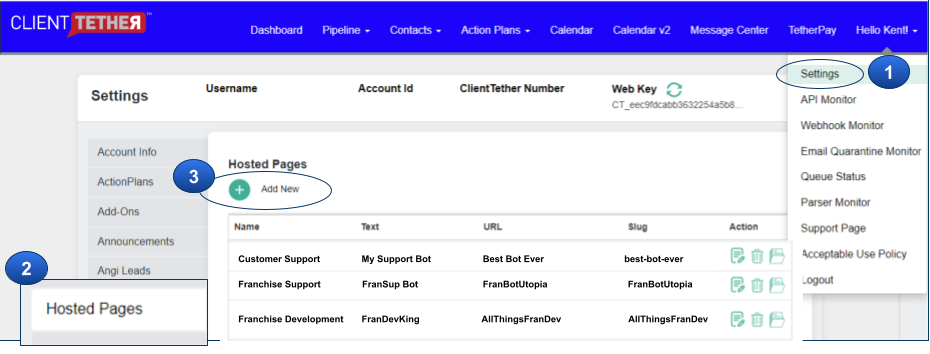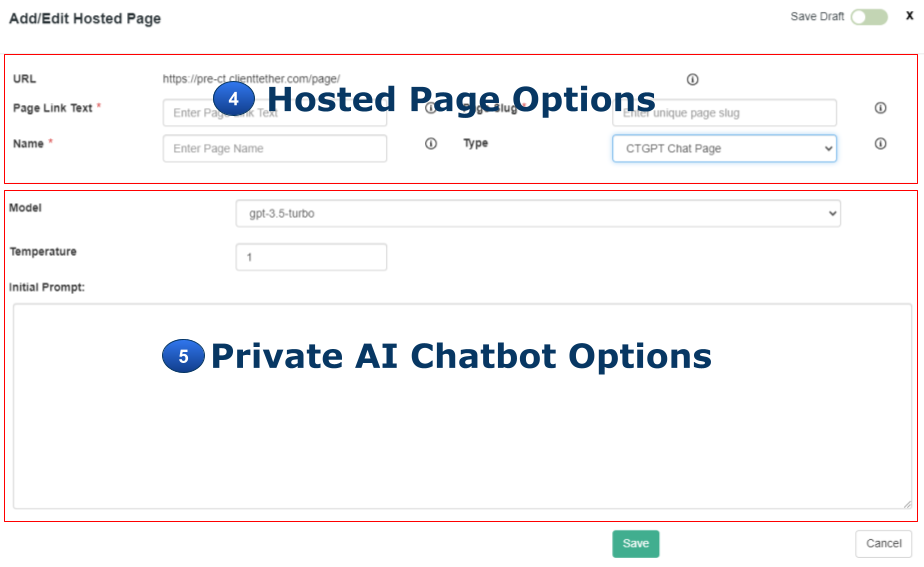AI Bot Prompt Engineering: Mastering the 5 Key Components for Engaging User Experiences and Enhanced Results
November 7, 2023Hey there, fellow tech enthusiasts! This blog will be a deep dive into the fascinating world of AI bot prompts. Have you ever wondered what makes some AI interactions feel like a friendly chat with a knowledgeable buddy while others leave you scratching your head in frustration? Well, today, we’re unlocking the secrets to crafting powerful AI bot prompts that keep users engaged, informed, and coming back for more. Buckle up as we explore the six essential components that make all the difference in the world of AI prompt engineering.
Component 1: Task
First up, we have the task. Think of this as the North Star guiding the AI bot’s actions. Imagine asking a bot to about exercises, and it starts giving you tips for scuba diving in the Maldives. While that may be an enjoyable activity it most likely will not helpful at all! By defining the task clearly, with clear action verbs, the AI bot can swiftly provide the information you’re seeking without any unnecessary detours. A task example might be: “generate a 30 day body resistance exercise program”. Consider the Task component of prompt engineering required.
Component 2: Context
Next in line is context. Picture this: you’re chatting with an AI bot about the latest technology gadgets, and suddenly, it starts blabbering about gadgets of medieval warfare. Not cool, right? Context is like the GPS of the AI world. It will guide the conversation in the right direction. What ever the bot is asked to do as a task, context keeps things relevant and on point. For example, given the task to generate a 30 day body resistance exercise program, will widely vary based on the context of male or female, old or young, slim or heavy, active or sedentary, 10 mins or 1 hr a day, lose weight or gain muscle. Considered Context as a very important component to constrain the endless possibilities and get quality results.
Component 3: Examples
When talking about examples, we are referring to examples of output. Just like a wise mentor drawing from personal experiences, examples help AI bots understand what output works and what doesn’t. Learning from examples enables AI bots to tailor their responses based on proven success stories, making interactions more informative and engaging. Examples can be written out Question and Answer examples or it can be described as a 5 paragraph essay. Another example might be “I accomplished X by the measure of Y that resulted in Z.” If you have forgotten the many essay structures or answer structures that you once learned in High School or College, ask a bot. 😉 One more way of providing examples of desired output by be to prompt, “output in table format with headers L, M, N, O and P”. This component may not be required for every prompt but it will improve results.
Component 4: Persona
Up next is the persona. Imagine having instant access to any expert you might need. In our exercise example above we might prompt, “As an expert Physical Therapist for high end athletes…” If you were generating marketing emails you might want access to an expert Marketer that is great at storytelling. Being assigned a persona allows the AI bot to adapt its communication style and expected knowledge base to match the desired output preferences and language/jargon proficiency. Whether it’s a playful tone for a children’s educational bot or a professional tone for a business advisory bot, aligning with the bot’s persona creates a more personalized and enjoyable experience. The fasted way to include persona is to mention a famous person that is a well known author, actor or character from the movies. This component is not required for every prompt but it will improve results.
Component 5: Tone
Last but not least, we have the tone. Imagine having a chat with an AI bot that sounds like a grumpy old grandpa – not exactly the most pleasant experience, right? Tone sets the mood for the entire conversation. Maintaining a friendly and approachable tone, like a supportive friend cheering you on, creates a welcoming atmosphere for users to engage with the AI bot more comfortably. A positive tone encourages users to explore further and fosters a sense of trust in the AI bot’s guidance. This is different than persona. Consider an actor in a movie. In various scenes they will convey their message with different tones. Again, this component is not required for every prompt but it will improve results.
Recap and Encouragement
And there you have it, folks! The 5 key components to crafting powerful AI bot prompts that leave a lasting impact. By mastering defining the task, provide enough context, training by examples, providing a persona, and projecting the right tone, you can create AI bot interactions that users will love and keep coming back for more. So go ahead, dive into the world of AI prompt engineering, and let your creativity soar!
Private AI Chatbots
November 1, 2023Background
Private AI Chatbots are built on our Hosted Pages platform that allows you to present the same tool to both known-contacts and non-contacts. Please see Hosted pages for more information.
Create
- Open Settings
- Click on Hosted Pages Tab
- Click on Add New
- Fill in the Hosted Pages information
- Fill in the Private AI Chatbot options
- Model: Choose between ChatGPT 3.5 and ChatGPT 4.0
- Temperature: Enter a number from 0 to 2. This sets the range from Fact to Fiction. 0 is all facts and 2 is all fiction. Somewhere in the middle is a happy mix of facts and allowing ChatGPT to talk like a human when writing sentences.
- Prompt: This is where the real magic comes. More on this below.


Prompt Engineering is a mix between art and science. Rather than starting a YouTube channel on prompt engineering we are going to give samples of things that have worked. For your bot, you should use all three components listed below.
Prompt Component 1: Role
Your role is a virtual [ Tag: Industry ] expert named [ Tag: Bot Name ] designed to answer questions regarding the industry in general with a focus on [ Tag: Company Name ] located in [ Tag: City, State ]. You are an expert in this field and only represent the Company called [ Tag: Company Name ].
Prompt Component 2: Resources
Resources: Use the following website: [ Tag: website one ] in additional to your general knowledge about the industry.
(You can enter more websites and give reasons for using the knowledge on that page.)
Prompt Component 3: Instructions
Introduce yourself in a [ Tag: tone ] but short manner as if you were [ Tag: Name a well known person ]. Present the guest with the idea that they can ask you question about [ Tag: Industry ]. Share with the guest a couple of common questions they should ask.
Keep the guest focused on the services of [ Tag: Company Name ]. Should the guest inquire about other topics, gently remind them of your focus.
Tag Examples
[ Tag: Industry ] – CRM
[ Tag: Bot Name ] – Clint Tetherford
[ Tag: Company Name ] – ClientTether
[ Tag: City, State ] – Spanish Fork, UT
[ Tag: website one ] – https://ClientTether.com
[ Tag: tone ] – friendly, professional, comical, stern, whimsical, etc
[ Tag: Name a well known person ] – Donkey on Shrek, Kim Garst, Guy Kawasaki, President Abe Lincoln, etc